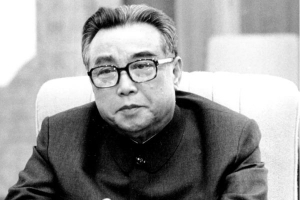Top 12 Interesting Facts about Seoul
The heart and soul of South Korea are Seoul. This city is well-known for some wonderful things and holds a number of records. Seoul is a leading city in every ... read more...field, including politics, economics, technology, culture, heritage, and nature. Today, we will learn some interesting facts about Seoul.
-
The largest and capital city of South Korea is Seoul. Several Korean governments, including Baekje, Joseon, the Korean Empire, Goryeo (as a subsidiary city), and the current South Korea, all had Seoul as their capital. It is situated along the Han River at a crucial area. The inhabitants of Baekje, one of the Three Kingdoms of Korea, created Seoul more than two thousand years ago, in 18 BC. Later, under the Joseon dynasty, the city was named the capital of Korea. Bukhan Mountain, which is situated on the northern outskirts of the city, is one of many hills and mountains that encircle Seoul.
One of the interesting facts about Seoul is it has gone by a number of names. During the Baekje era, one of the Three Kingdoms that ruled over ancient Korea from the first century BCE to the seventh century CE, Seoul was known as Wiryeseong. Afterward, during the Goryeo Dynasty (918-1392) it was known as Wiryeseong. Its name during the Joseon Dynasty (1392–1910) was Hanyang. Its name during colonial rule (1910–1945) was Keijo. Seoul was given its official name in 1945, and in 1949 it was made a Seoul Special City.
The Changdeok Palace, Hwaseong Fortress, Jongmyo Shrine, Namhansanseong, and the Royal Tombs of the Joseon Dynasty are five UNESCO World Heritage Sites that are located in the Seoul Capital Area. Key modern landmarks in Seoul include the N Seoul Tower, the 63 Building, the Lotte World Tower, the Dongdaemun Design Plaza, Lotte World & Trade Tower, COEX, and the IFC Seoul. More recently, Seoul has been a major site for modern architectural construction. 2010 World Design Capital has been designated as Seoul. K-pop and the Korean wave were created there.
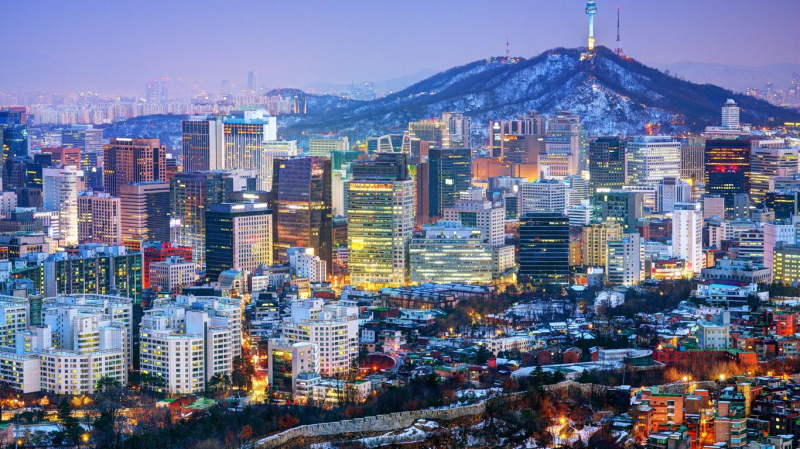
Photo: vn.kayak 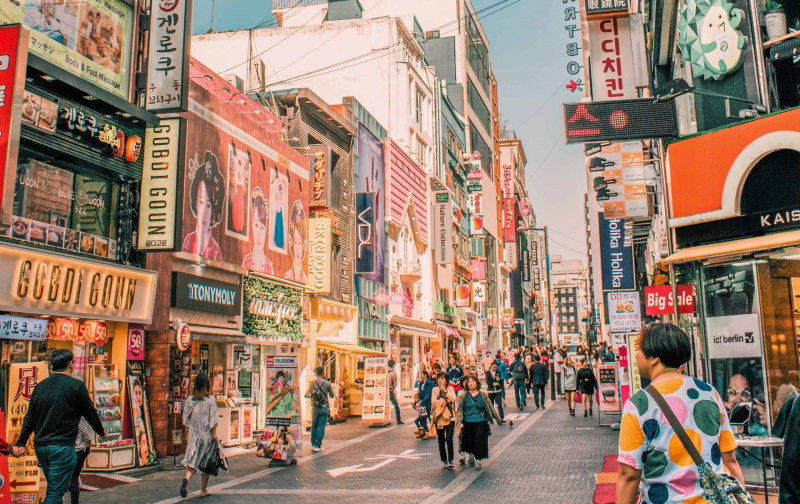
Photo: duhocviethan -
The capital and largest city of South Korea is Seoul. Its population is around to 10 million, or almost 1/5 of all Koreans. Because it has a population of more than ten million, it is regarded as a megacity. In Seoul's National Capital Area, about half of the city's inhabitants live (which also includes Incheon and Gyeonggi). With more than 25.6 million inhabitants, the Seoul Capital Area is the second-largest metropolitan area in the world. It has the sixth-highest population density worldwide.
In terms of overall quality of life, Seoul ranked seventh in the world in 2016, according to data from the Sustainable Cities Index by design and consulting company Arcadis. The city's economy represents 67 percent of the country's GDP, with a gross domestic product (GDP) of $903 billion, according to data from Oxford Economics, an advising business, for 2015. The Global Power City Index 2017, created by the Institute for Urban Strategies of the Mori Memorial Foundation, ranks cities based on six factors, including economy, research, culture, liveability, and accessibility. Seoul is ranked sixth, surpassing cities like Hong Kong.
The corporate headquarters of Samsung and LG are located in Seoul. Then there are programs that link business with urban development. The Digital Media City, a facility with more than 500,000 square meters of space devoted to digital technology, is one such. Since its construction in 2002, it has drawn cutting-edge businesses from the high-tech industry. The Gangnam district became home to Google's first Asian campus for start-ups in 2015, demonstrating the city's dynamism. Therefore, it should not be surprising that the city ranks well in the United Nations' ICT Development Index and is considered one of the world's broadband capitals.
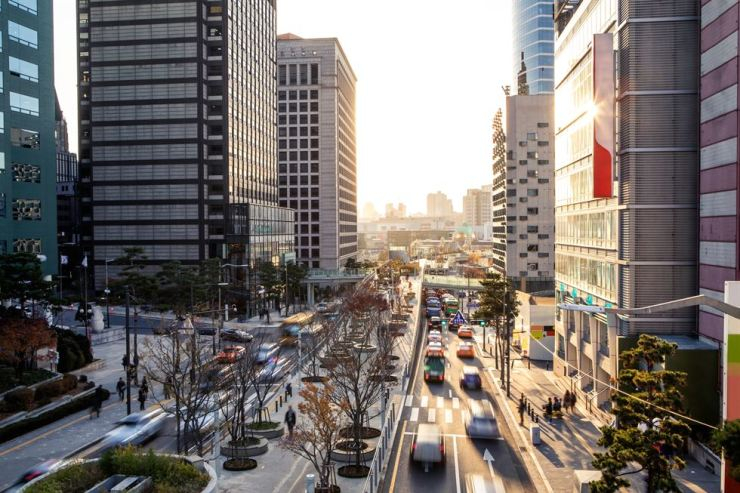
Photo: koreatimes 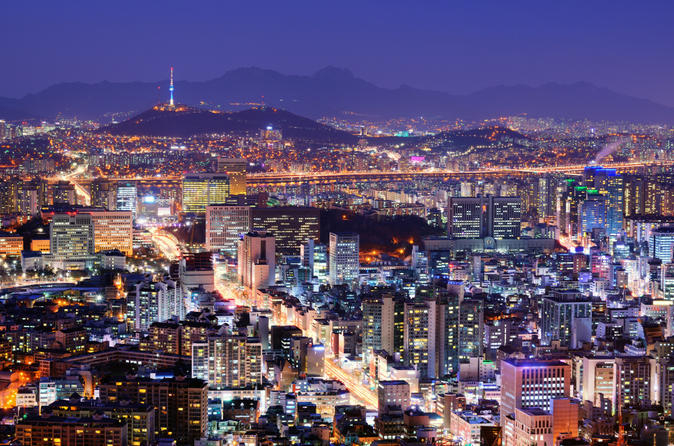
Photo: shrimpamongwhales -
The high-speed rail network in South Korea is called Korea Train Express, and it is run by Korail. In 1992, work on the high-speed railway connecting Seoul and Busan got underway. On April 1, 2004, KTX services were made available.
Currently, trains may travel at a top speed of 305 km/h (190 mph), even though the infrastructure is built to support 350 km/h (217 mph). The initial rolling stock, which was partially constructed in Korea, was based on Alstom's TGV Réseau. The HSR-350x, a domestically created high-speed train that in testing reached 352.4 km/h (219.0 mph), gave rise to the KTX Sancheon, a second type of high-speed train now operated by Korail. After Japan, France, and China, South Korea became the fourth country in the world to construct a high-speed train running on conventional track capable of reaching speeds beyond 420 km/h in 2013 with the HEMU-430X, the next-generation KTX train.
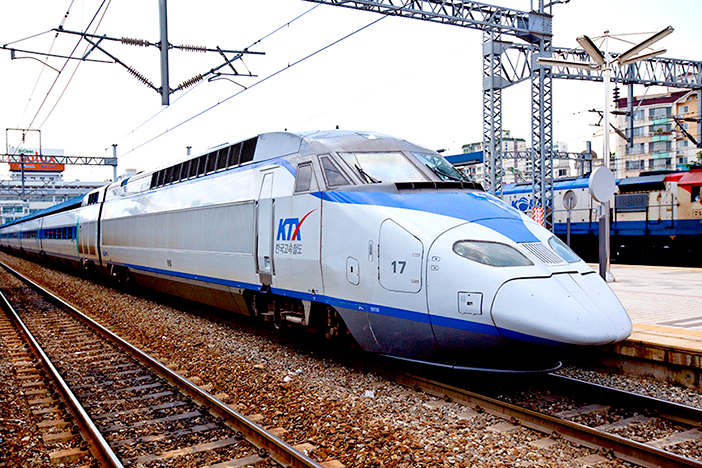
Photo: english.visitkorea 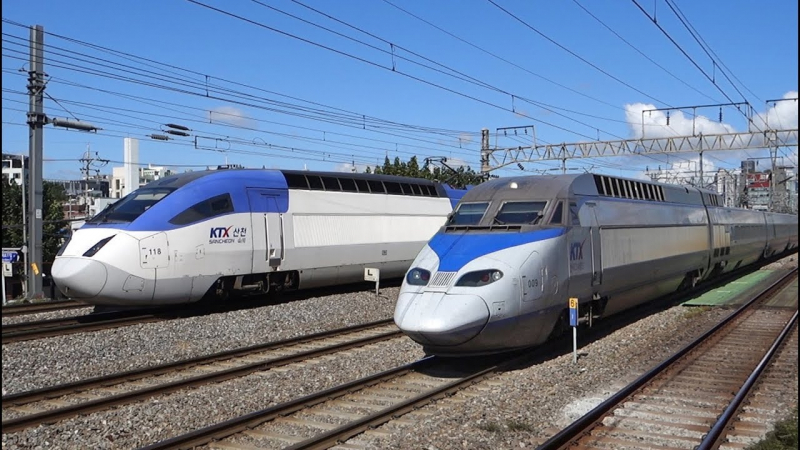
Photo: destimap -
Despite being known for its skyline loaded with skyscrapers, South Korea boasts a beautiful and expansive natural landscape. The nation has 2,413 kilometers of coastline, and around 64% of the land is covered in forests. But, one of the interesting facts about Seoul is it has the least amount of urban green space per person in South Korea, while is surrounded by nature. Urban green space is any vegetated or forested area in a city that does not include parks or natural woods.
Seoul had the poorest amount of urban green space per resident, only 4.38m2, among the country's 17 largest cities and provinces, according to the Korea Forest Service. For instance, there are 13 square meters of green space available to Parisians, 23 square meters in New York, and 27 square meters in London. To ensure that everyone has a decent place to live, the World Health Organization has advised cities to offer a minimum of 9m2 of urban green space for each person.
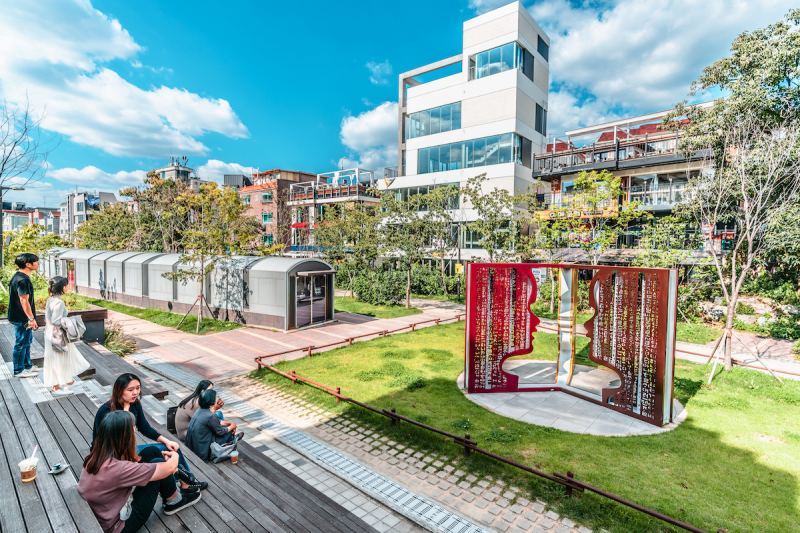
Photo: lonelyplanet 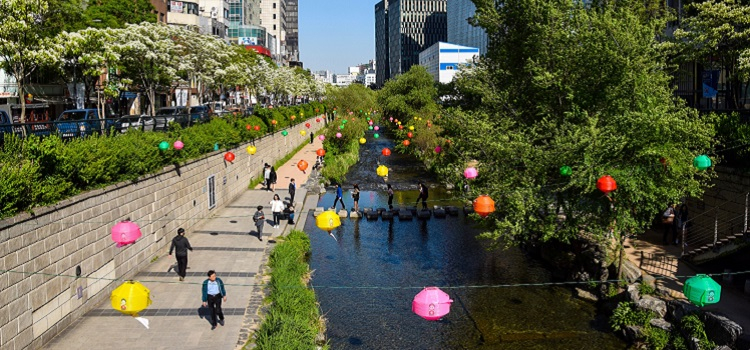
Photo: greencitytrips -
One of the interesting facts about Soeul is the Banpo Grand Bridge in Seoul is recognized as the largest fountain bridge in the world by the Guinness Book of World Records. On the Banpo Bridge, which spans the Han River in Seoul, South Korea, is where you can find the Banpo Grand Bridge Fountain. The 3,740-foot installed fountain is (1,140 meters). A total of 380 articulating nozzles with high-intensity LED color-changing lights are included in the fountain display system. The nozzles can project water streams 65 feet vertically and 140 feet (43 meters) horizontally (20 meters). The project is made to be environmentally beneficial by continuously recycling the water discharged by pumping it back into the fountain. The jets can also move in time with the music. This transforms into a spectacle at night when LED lights illuminate the fountains, which dance to 100 different songs. The water appears to be dancing as a result.
The Moonlight Rainbow Fountain typically runs from April to October each year, with varying timetables and performances that last 15 to 20 minutes. There are occasionally staged special performances as well.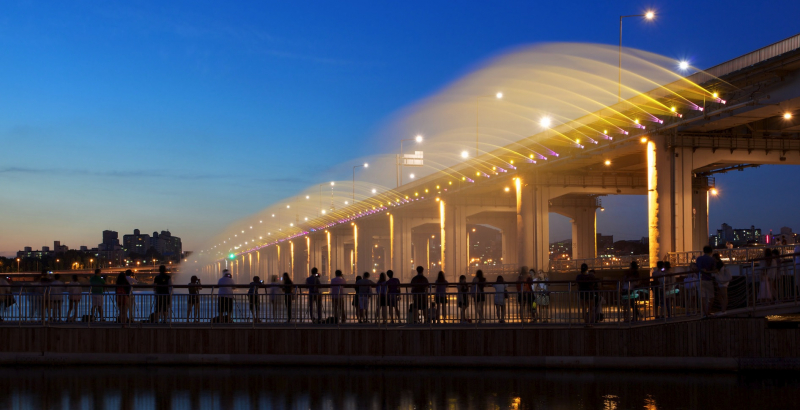
Photo: fountain-source 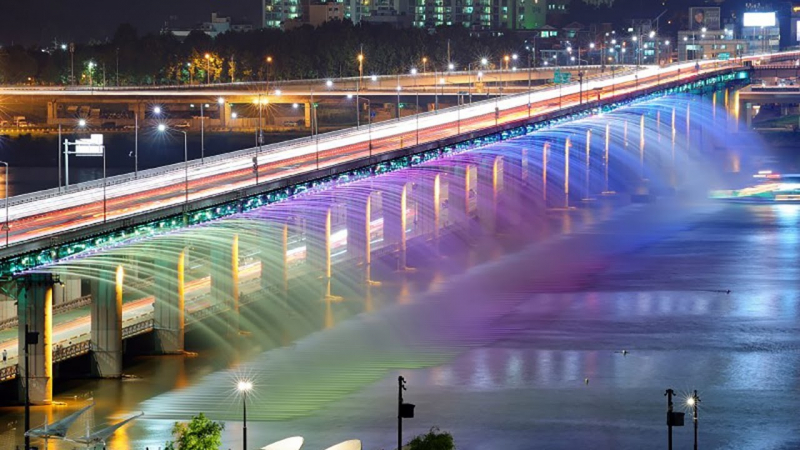
Photo: youtube -
In Seoul, South Korea's Jongno-gu neighborhood, there is a sizable business area known as Dongdaemun Market or Tongdaemun (abbreviated DDM). It is a well-known shopping and tourism attraction with traditional marketplaces and shopping complexes that has been designated a "Special Tourism Zone" since 2002. Around the world, there are numerous markets that are well-known for various things. However, none of them compare to Seoul's Dongdaemun Market. One of the interesting facts about Seoul is that this market is home to over 50,000 producers and over 30,000 shops in the fashion industry.
The market offers a wide range of products, but it is known for its silks and fabrics, clothing, footwear, leather goods, sporting goods, electronics and plumbing, office supplies, fortune-tellers, and toy shops, as well as food sections that specialize in Korean cuisine. It also has a lot of pet stores. The Korean snacks Soondae and mandu, it is included as one of "Asia's 10 Greatest Street Food Cities" by Seoul.
DDM was previously a night market, with wholesalers open from 1:00 a.m. to 1:00 p.m. With some stores open 24 hours a day, the neighborhood is now open for 18 and a half hours per day from 10:30 am to 5:00 am, while most are closed on Sundays and major holidays.
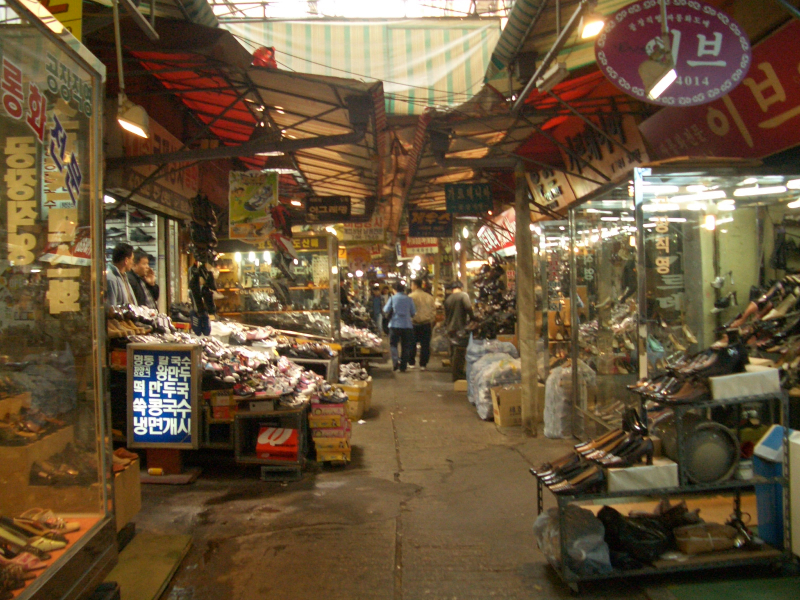
Photo: wikipedia 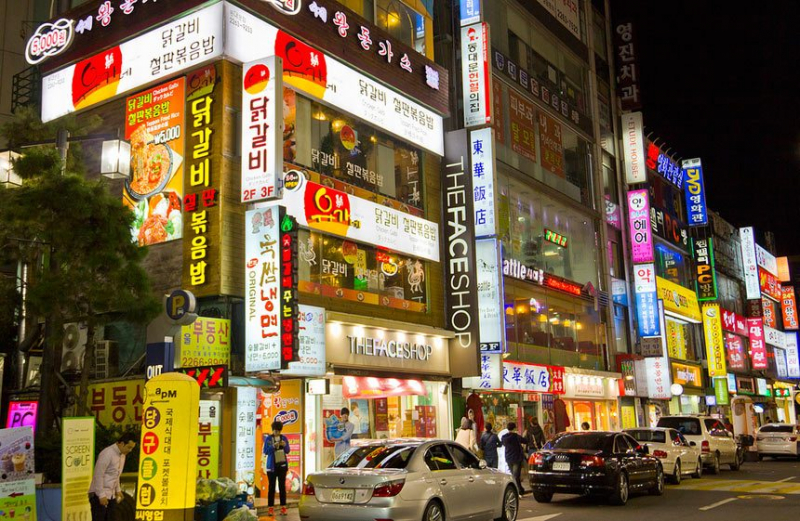
Photo: tourmoila -
You may have observed that an unexpectedly high percentage of South Koreans go by the names Kim, Park, or Lee. Do they all have a connection as a result? Obviously not. One of the interesting facts about Soeul is only three surnames, Kim, Lee, and Park, make up the appellations of about half of all Koreans, a phenomenon that may be entirely unique to the Korean culture, which is made up of about 75 million people who live on the Korean peninsula and another 7 million in the global diaspora.
According to statistics, there are only about 250 surnames now in use across the entire population (compared to the 100,000 in most similarly sized countries). Government records indicate that more than one-fifth of all Koreans, or around 10 million people, go by the surname "Kim," making it the clear winner by a significant margin. Smith, Jones, and Williams are the three most common surnames in the United States, however they are not as prevalent as Kim, Lee, and Park in Korea. Of course, compared to Korea, which is practically homogeneous, the United States is a much more ethnically varied country.
The causes of this date all the way back to the Silla kingdom (57 BCE–935 CE), and they are connected to their less than amicable connections with China and Japan.
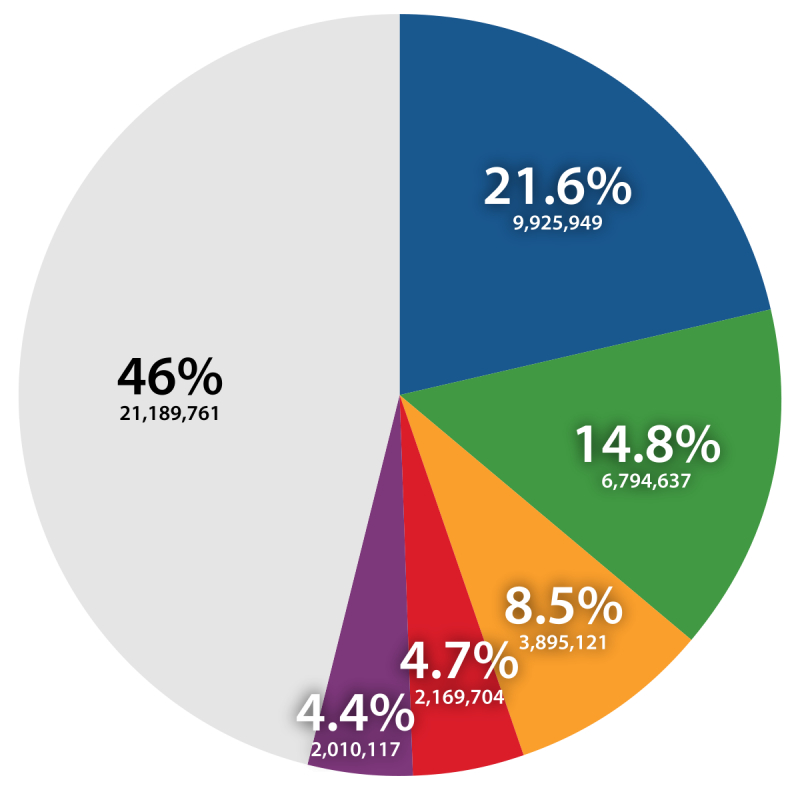
Photo: wikipedia 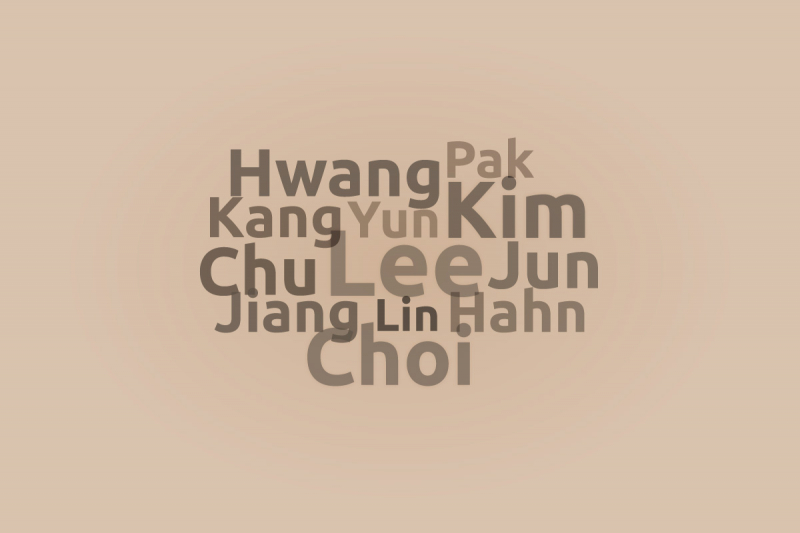
Photo: familyeducation -
One universal fact is that Koreans believe their blood type has some significance. In that regard, their neighbors in Japan are comparable to them. Every South Korean is certain to know their blood type, unlike people in other nations who may or may not.
The belief that blood kinds affect a person's personality and traits is one of the fascinating things about blood types in South Korea. Since your partner's blood type might not be a good match for yours, blood types can be utilized to aid in the selection of a marriage.
For instance, Type B women should seek out Type O men. Males of Type AB will also work, but avoid Type A's! While not universally accepted, be prepared to hear about it while visiting South Korea.
Blood type is known in Korean as hyeoraekyeong. It's one of several inquiries you should make of your possible date if you're in South Korea.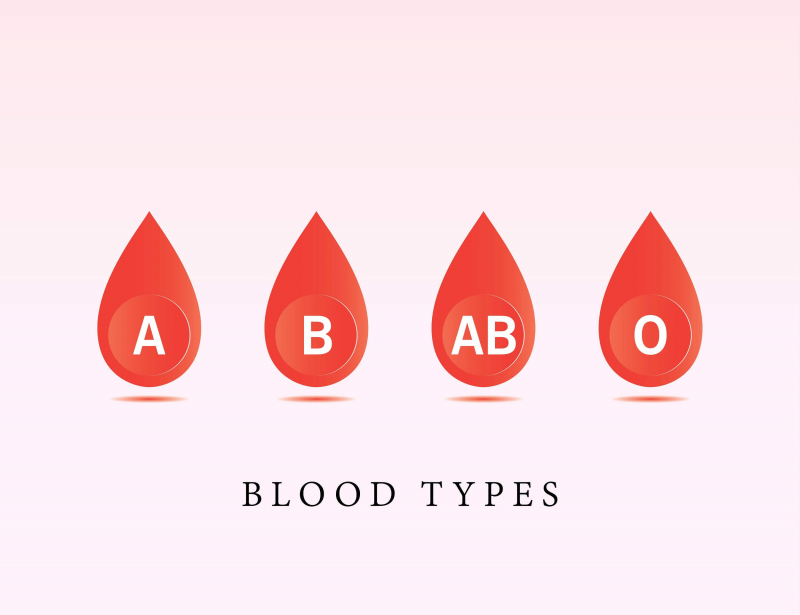
Photo: betteraging 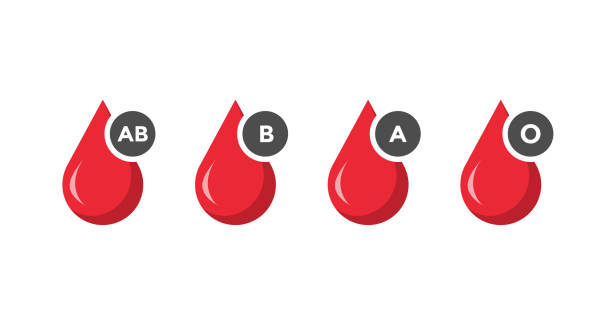
Photo: istock -
Electric fans being left on while you sleep in a room with the windows and door closed can result in death, according to a long-standing urban legend that originated in South Korea. The fan is thought to reduce body temperature and lead to hypothermia (abnormally low body temperature). Additionally, according to Koreans, breathing in a room with a fan can be difficult and lead to choking. Automatic shutoff timers on fans are regarded as a life-saving feature in South Korea as a result of these beliefs.
It is essential to avoid attempting to persuade others who do not share this belief in South Korea despite the fact that some do. Even if you can provide scientific evidence to support your claim, superstitious South Koreans may still have their doubts. If you want to inquire about this South Korean phenomena, you should know the Korean word for "fan death" (seonpunggisamangseol)! It's one of several urban legends from Korea.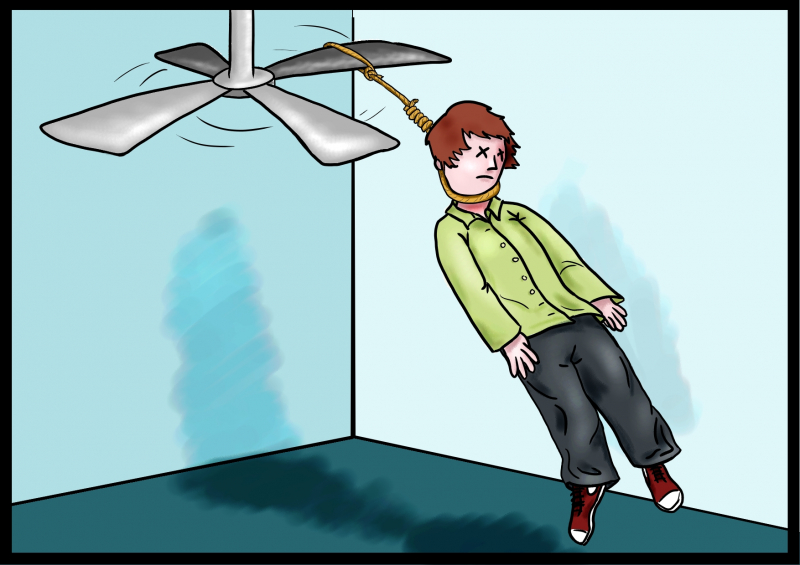
Photo: noonline 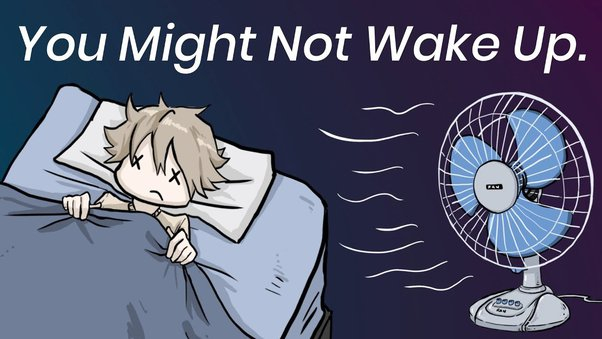
Photo: quora -
It is claimed that South Koreans give anything they try their all. Soccer (football), hot cuisine, and drinking! Many people are shocked to learn that Koreans are by far one of Asia's top drinkers. Compared to its Asian neighbors, South Korea has a robust drinking culture. This may have roots in their culture and custom, where drinking is a common part of celebrating festivals. Koreans are rated #17 globally and consume an average of 12.3L of alcohol annually, according to the World Health Organization!
Koreans drink more alcohol per person per year than other countries like Germany, the U.S., Ireland, Canada, and Australia. The country is considered one of the world’s top consumers! A big contributor to this esteemed award is the consumption of soju. Soju is usually around 19% alcohol content and is commonly drunk with main meals in South Korea.
If you are a fan of Korean movies, you must have watched a lot of movies with the female lead drinking alcohol. Koreans, both men and women, drink alcohol in every happy and sad moment in their lives.
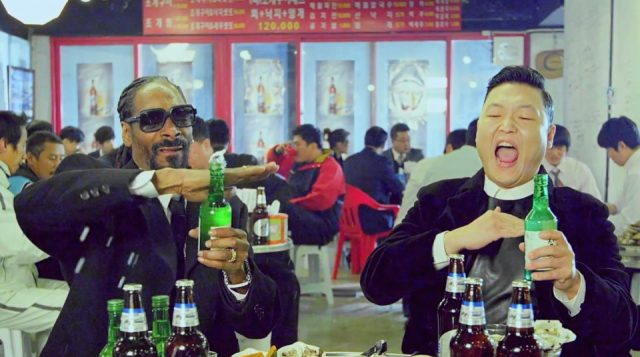
Photo: thedrinksbusiness 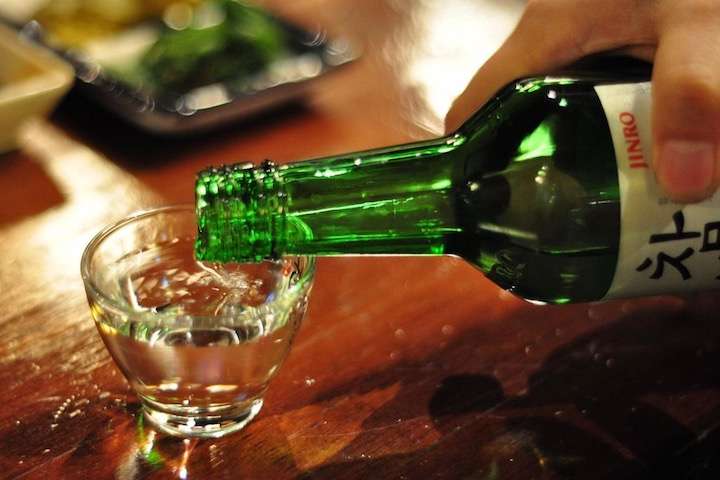
Photo: koreaexpose -
You'll adore the way Soeul handles food delivery if you enjoy having your food delivered. One of the best food delivery services in the world can be found in South Korea. You may expect a delivery person on a motorcycle to bring your meal, whether you're ordering from a fast food joint or a Korean barbecue establishment. The best thing about the motorcycle is that it allows them to weave in and out of traffic, getting to you much faster than if your food were being served on four wheels as opposed to two!
One of the interesting things about food delivery in Soeul is that you can leave the dishes outside your front door after you've finished eating, and the person who brought your food will come back later to pick them up. This service is excellent! As most restaurants are open late for delivery, if you're looking for a snack after a night out, you can call in your order, so you don't even have to leave your apartment. Make sure to order delivery at least once while you're in Korea to see what all the hype is about.
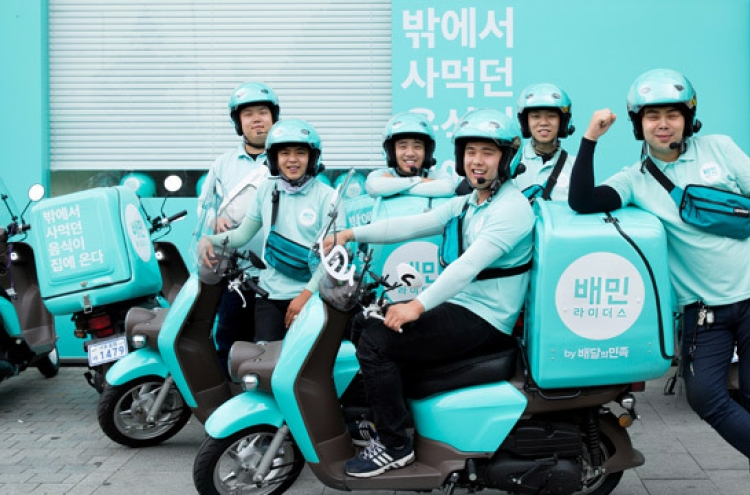
Photo: koreaherald 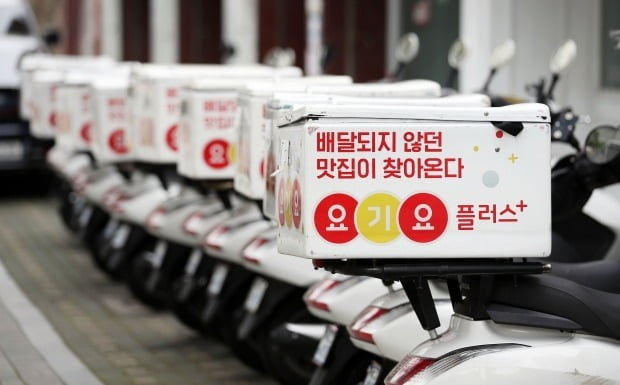
Photo: kedglobal -
In contrast to most Western nations where plastic surgery is at best taboo and at worst frowned upon, Soeul has fully embraced the procedure to the point that it is widely acceptable (and even encouraged). Teenagers in South Korea frequently have plastic surgery before starting college. They don't need to worry about getting permission from their parents because they frequently support and pay for it!
In South Korea, women are the ones who seek plastic surgery the most frequently. The eyes, especially for double eyelid surgery, the nose, and the chin are the most frequently operated on body parts in an effort to achieve a celebrity-inspired appearance. In South Korea, plastic surgery is also far more accessible and reasonably priced than in other nations. For a country that values appearance like Korea, it's not uncommon to realize that nearly everyone around you has had facial interventions to become more beautiful.
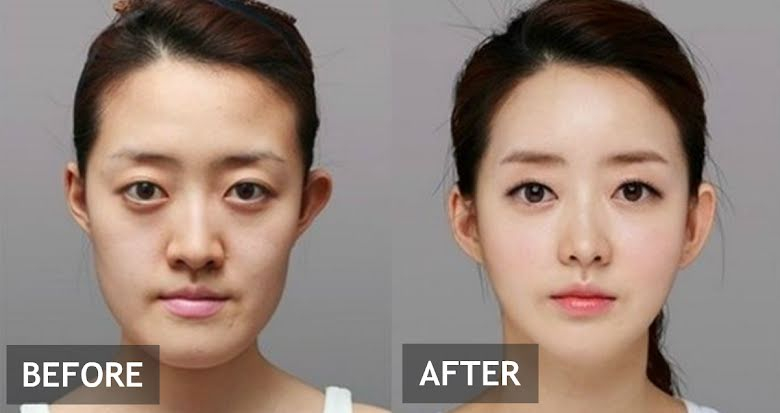
Photo: koreaboo 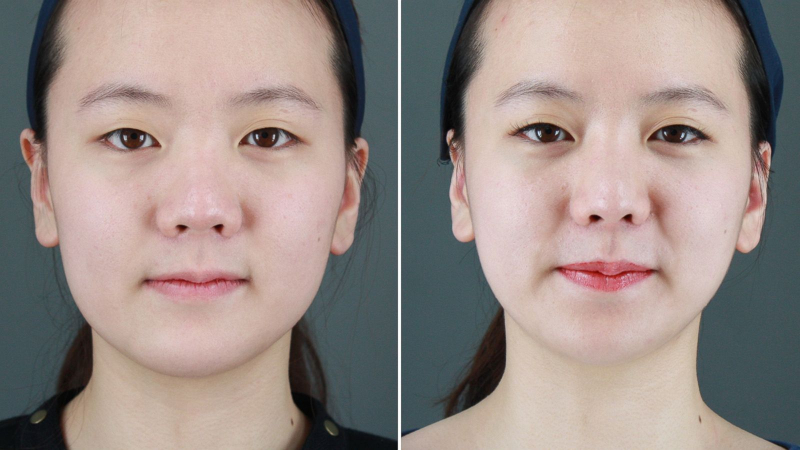
Photo: abcnews























